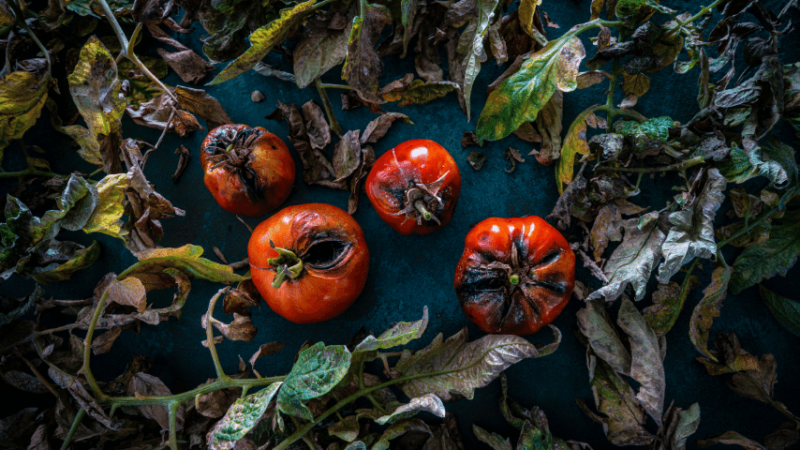Store-bought tomatoes have no flavor at all for those of us who have eaten a tomato fresh out of the garden or a private farmer’s field.
I love homegrown tomatoes on a BLT, sliced and added to my supper plate, or cooked down into a delicious marinara sauce.
The older I get, the more I care about how well the tomatoes in my garden thrive, and there are plenty of pests trying to stunt their health.
Table of Contents
What Is Eating Holes In My Tomatoes?
There are a number of pests that eat holes in tomato plants. Tomato fruitworms, snails, slugs, tomato hornworms, stinkbugs, or cutworms are usually the culprits when there are holes in the tomatoes, but birds often eat tomatoes, also. To solve the problem, determine which is the culprit, and act accordingly, depending upon which one it is.
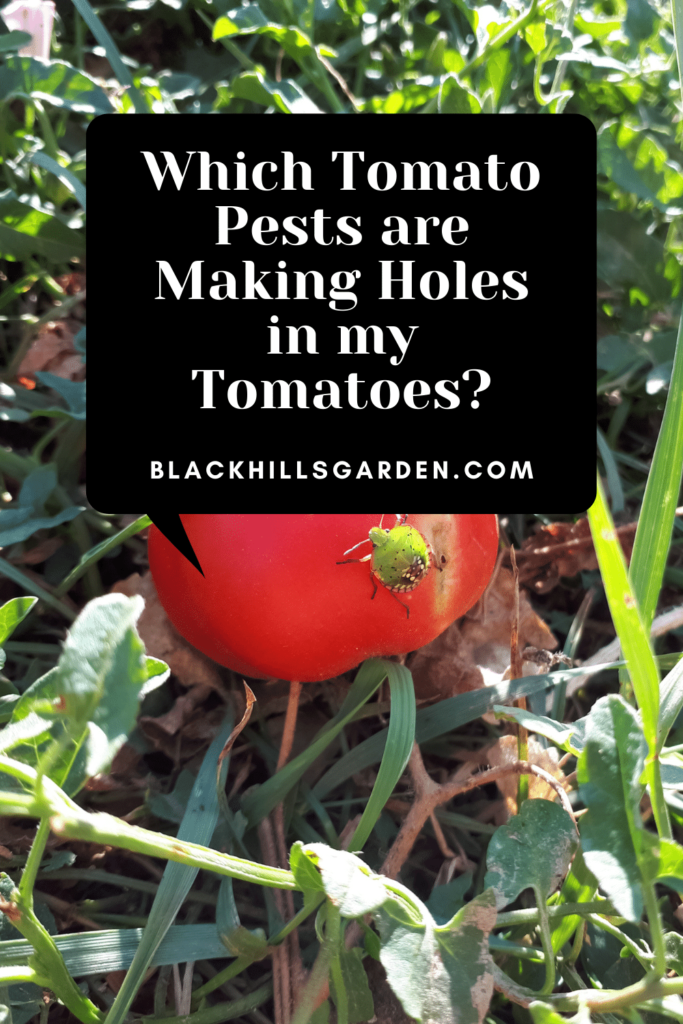
5. Animals that are eating holes in my tomatoes
1. Tomato Fruitworms
Tomato fruitworms bore small holes into tomatoes and then eat them from the inside out. The tomato fruit begins to rot as soon as the fruitworms bore their holes.
Once the larvae of the fruitworm get into the tomato, it creates tunnels, eating through the tomato’s interior and leaving only fluid and remnants.
The worms also eat holes in the leaves and stems (roots).
Tomato fruitworms, also called corn earworms and cotton bollworms, are a medium to light brown color, often with somewhat of a green tinge.
They range in length from one to one and a quarter inches.
According to the University of California, tomato fruitworms leave the inside of a tomato behind as a messy slush and will then move on to the next tomato.
Fruitworms enter tomato fruits once they are about 0.75-2 inches in diameter.
Try using row covers over the plants until they flower. Carbaryl and permethrin are effective pesticides that work well for controlling caterpillars, but they are not organic.
To stay organic, try neem oil, BT (bacillus thuringiensis), DE (diatomaceous earth), or Spinosad.
Hand pick the fruitworm eggs and drop them into soapy water, and don’t ever plant near corn.
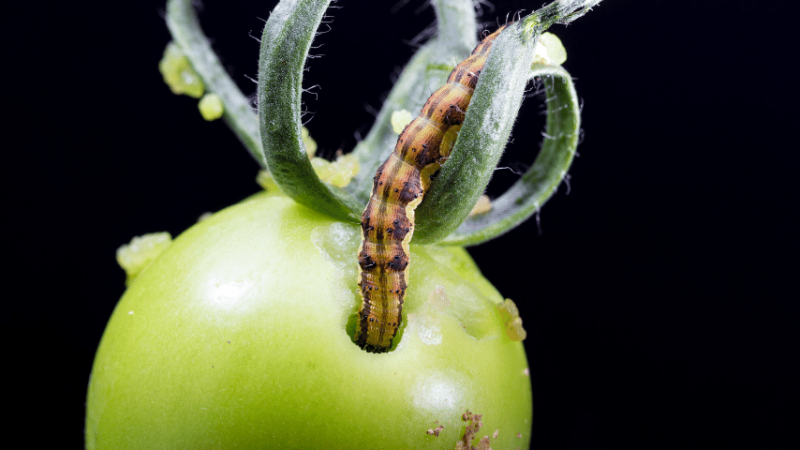
2. Snails and Slugs
Snails and slugs chew large holes in tomatoes and the plant’s leaves, doing the most damage nearer the ground.
A sure sign of snails and slugs is the slime they emit and leave for you to find.
These creatures prefer to eat at night. However, they are drawn to moisture in the soil, so remember that when you plan to water.
A slug has two antennae and looks like a very small, slimy snake. A snail looks like a slug with a shell on its back.

Phosphate-based iron slug pellets are a good place to begin for controlling snails and slugs. DE (diatomaceous earth) works well, also.
It tears off the skin of the creatures as they drag their bodies through it. They then dehydrate and die.
Since they thrive in moist soil but prefer eating at night, it’s a good idea to do the watering in the morning hours, so the soil is as dry as possible at night.
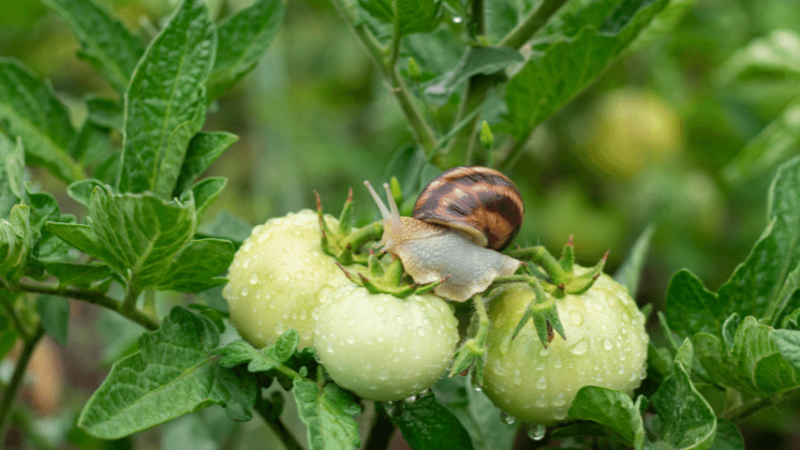
3. Stink bugs
Adult stink bugs have wings, but whether adults or not, stink bugs can do serious damage to a patch of tomatoes.
Stink bugs have two antennae with which they poke holes in the fruit. Through the holes, they suck out all the delicious fresh tomato juice.
Around each puncture, the skin of the tomato will show discoloration of yellow.
This insect has six legs and a grayish-brown body that’s roughly three-fourths of an inch long. It has two antennas, and its body is shaped like a shield.
The form of stink bugs makes them also known as shield bugs.
They are called stink bugs because they give off a terrible smell if they are crushed, so crushing them is not recommended.
Remove stink bugs as soon as they are sighted. Some pick them off by hand, but I prefer a powerful stream of water.
Yellow flowers are a distraction to stink bugs for whatever reason. Plant marigolds and other pollen-producing flowers.
Doing so will not only distract the stink bugs but attract parasitic wasps. These wasps are host-feeders that lay their eggs inside other insects’ eggs.
So, the wasps will take over the stink bugs’ eggs and keep them from multiplying.
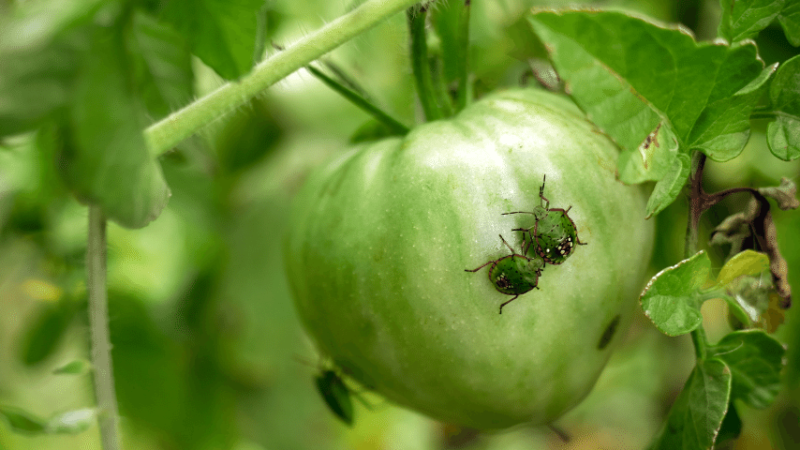
4. Cutworms
Cutworms don’t come out during the day, but at night, they start eating the tomato plant’s stems and work up toward its fruit, where they pierce holes in the skins.
Cutworms are caterpillars called by different names, differentiated by color only. These are the black cutworm, the spotted cutworm, and the variegated cutworm.
Each turns into a moth, and the cycle begins again.
Parasitic wasps can also aid in controlling cutworms. The cutworm, too, unlike its counterpart, the fruitworm, can be thwarted by a tomato collar.
A tomato collar is a firm, flat ring, such as a round cardboard cutout, that is placed snugly around the tomato plant’s base to keep the cutworm from climbing up.
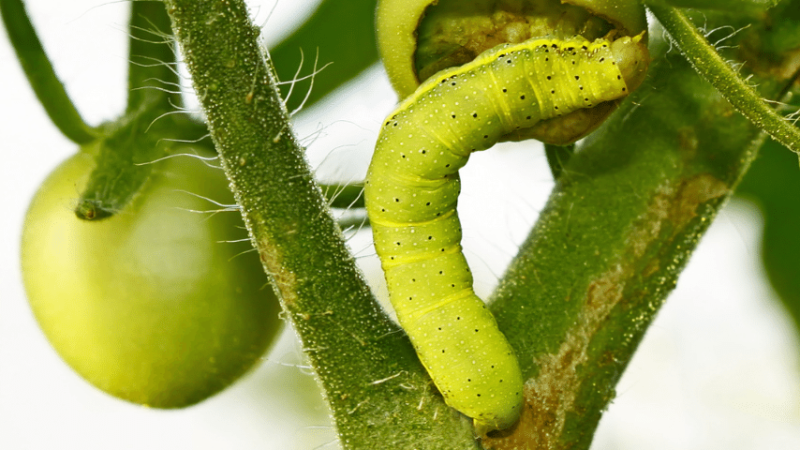
5. Birds
Birds are obviously not insects, but they will certainly leave holes in those precious tomato plants.
If a bird cannot find suitable water or food sources outside of the garden, then the tomato patch it is.
Birds use their beaks to poke holes in the tomatoes so that they can extract the juice for thirst, but they will also eat both ripened and unripened tomatoes if they are hungry.
A swarm of birds may swiftly devastate a tomato field.
To stop them, distract them by offering up other food and water sources, like a birdbath. Be strategic about the placement, keeping it away from the tomato patch.
Another tactic — ever wonder what scarecrows are all about?
Anything that’s where it shouldn’t be or that looks suspect will usually spook birds and keep them out of the tomatoes.
Yet another deterrent would be setting up coverings, such as netting or cages.
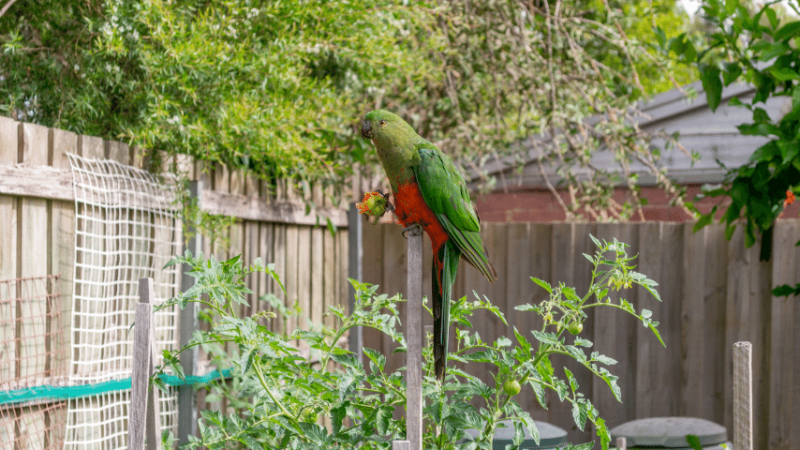
Frequently Asked Questions About Tomato Pests are Making Holes in my Tomatoes
Why are my tomatoes splitting?
Tomatoes split when the fruit inside grows faster than the skin can stretch, and it usually occurs after heavy precipitation.
If this is a persistent issue, try going out right after heavy rain and picking all the tomatoes that are ripe or near ripe.
Why aren’t my tomatoes turning red?
Tomatoes ripen best at 70-75°F, and when the temperature exceeds 85°F, a tomato’s ripening process slows considerably and stops if it gets even hotter. Overwatering, overfeeding, and overfertilizing might also be the culprits.
To Summarize
It’s important to investigate which pest is eating holes in the tomatoes before a determination can be made about what needs to be done. It is not safe to consume tomatoes that have holes in them.

